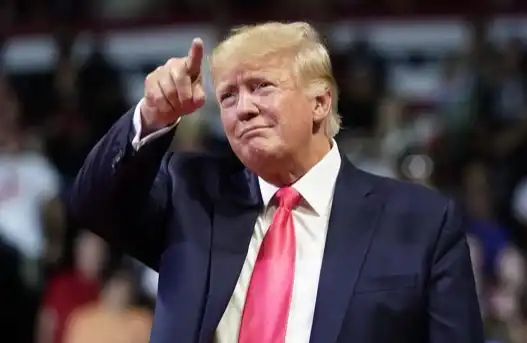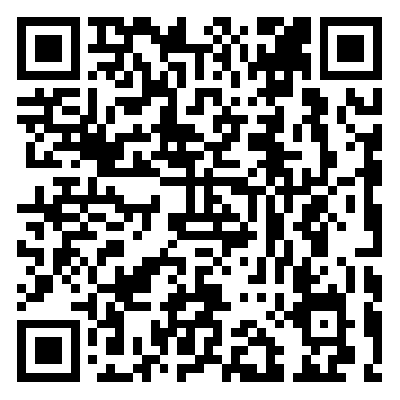Interpreting the US New Tariff Policy on April 2nd: Market Uncertainty to Reach Its Peak
Original Title: "April 2nd Trading Manual: Three Possible Scenarios"
Original Author: Zhao Ying, Wall Street News
With the upcoming unveiling of the U.S. tariff policy on April 2nd, market uncertainty will reach a new peak, and investors need to buckle up and prepare for volatility!
According to CCTV News's report on Saturday, local time on March 28th, U.S. President Trump plans to announce new tariffs in the coming days. He expressed a certain degree of openness to reaching tariff agreements with other countries, but he hinted that any agreements would be reached after the April 2nd tariff measures take effect.
When asked if this would happen before the announcement of tariff increases on April 2nd, he said, "No, it won't, most likely later." Trump also reiterated the plan to announce drug tariffs but refused to disclose the specific tariff rates.
In its latest report, Citigroup summarized three main scenarios and their respective market impacts: First, announcing reciprocal tariffs only, in which case, the market reaction would be relatively limited. Second, reciprocal tariffs plus Value-Added Tax (VAT), where the U.S. dollar index may immediately rise by 50-100 basis points, and global stock markets may also decline. Third, in addition to reciprocal tariffs and VAT, industry-specific tariffs are included, in which case, market reactions may be more intense.
After the S&P 500 experienced its worst start to a year since 2020, analysts have been warning of a higher likelihood of further declines than rises. Some analysts have pointed out that future tariffs and retaliatory actions are key, and the market reaction on "April 2nd" will largely depend on the timing of the tariffs, especially industry-specific tariffs and other countries' speed of response to reciprocal tariffs.
Three Major Tariff Scenarios
Citigroup's report indicated that as the April 2nd tariff measures announcement approaches, three main scenarios were identified based on the survey results, with their respective market impacts analyzed:
· Scenario One, Announcing Reciprocal Tariffs Only: If the Trump administration only announces reciprocal tariffs based on Most Favored Nation (MFN) simple average tariff gap on April 2nd, this would be a relatively mild outcome. According to Nomura Securities' survey, about 25.5% of respondents believe this scenario could occur, with countries like India, Thailand, and Indonesia potentially being the most affected. In this case, the market reaction may be relatively limited, and the U.S. dollar index may not experience significant fluctuations.
· Scenario Two, Reciprocal Tariffs Plus Value-Added Tax (VAT): If the tariff policy includes VAT, this would be a more aggressive move, potentially triggering risk aversion and a strengthening of the U.S. dollar. In this scenario, Germany's MFN tariff gap (including 19% VAT) is 20.4%, France is 21.1%, and Spain is 21.8%. The Asian region also faces risks, with Japan at 10.5%, India at 29.5%, and Thailand at 13.0%. This scenario could lead to the U.S. dollar index (DXY) rising by 50-100 basis points immediately after the announcement, but at the same time, the dollar against the yen may weaken, and global stock markets may decline. Asian rates may fall, with India and Thailand potentially dropping by 5-7 basis points.
· Scenario Three, More Aggressive Tariff Policy: In addition to reciprocal tariffs and value-added tax, it may also include industry-specific tariffs. For example, Trump previously announced a 25% tariff on imported finished vehicles (potentially impacting Mexico, South Korea, Japan, Canada, Germany), and hinted at the possibility of imposing tariffs on semiconductor chips and drugs (with South Korea and Singapore being the most affected). Furthermore, there may be a decision to not extend the 25% tariff deadline on Mexico and Canada, or to impose additional tariffs on imported Venezuelan oil. In this scenario, market reaction may be the most intense, the US Dollar Index may further strengthen, and the USD/JPY pair may experience a significant decline.
Markets Brace for Turbulence!
The roller-coaster ride of the US stock market has just begun, with the S&P 500 index heading towards its worst performance in the first quarter since 2020, and the upcoming tariff policy announcement may further exacerbate market volatility.
The tariff policy statement on April 2 will reveal which countries and industries the Trump administration will target, and the market is expected to experience significant fluctuations. The severity of the tariffs, their duration, the targeted countries and industries, as well as retaliatory measures by trading partners, will all contribute to intense market swings.
· Mark Malek, Chief Investment Officer at Siebert Financial, stated:
I am a staunch bull, but I want to tell you that from now until next week, especially before the start of earnings season, the potential for a stock market decline is greater than the possibility of an increase.
· Michael Arone, Chief Investment Strategist at State Street Global Advisors, said:
Uncertainty continues to plague the market, bringing about volatility, and on April 2 and beyond the deadline, there may be more volatility.
· Angelo Kourkafas, Senior Investment Strategist at Edward Jones, stated:
The April 2 statement may not be a "one-time event." It is an important milestone, but ultimately it does not completely eliminate all uncertainty.
· Matthew Aks, Senior Strategist at Evercore ISI, reminded:
The market reaction on April 2 "will largely depend on" the timing of future tariffs, especially industry-specific tariffs, and how quickly other countries respond to reciprocal tariffs. If other countries take retaliatory action, this will bring about a risk of an escalation cycle, potentially undermining any sense of relief.
According to a CCTV news report, Trump was interviewed on "Air Force One" en route to Florida and was asked whether he would be willing to discuss reaching a deal to lower U.S. tariffs with the UK and other countries. He replied, "If we could get something from this deal, it is possible - but you know, we have been taken advantage of for 40 years, even longer. This will not happen again. But yes, I would certainly be open to it."
Welcome to join the official BlockBeats community:
Telegram Subscription Group: https://t.me/theblockbeats
Telegram Discussion Group: https://t.me/BlockBeats_App
Official Twitter Account: https://twitter.com/BlockBeatsAsia
 Forum
Forum OPRR
OPRR Finance
Finance
 Specials
Specials
 On-chain Eco
On-chain Eco
 Entry
Entry
 Podcasts
Podcasts
 Data
Data

 Summarized by AI
Summarized by AI







